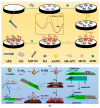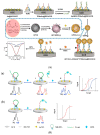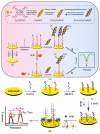Recent Progress of Electrochemical Aptasensors toward AFB1 Detection (2018-2023)
- PMID: 38248384
- PMCID: PMC10813172
- DOI: 10.3390/bios14010007
Recent Progress of Electrochemical Aptasensors toward AFB1 Detection (2018-2023)
Abstract
Food contaminants represent possible threats to humans and animals as severe food safety hazards. Prolonged exposure to contaminated food often leads to chronic diseases such as cancer, kidney or liver failure, immunosuppression, or genotoxicity. Aflatoxins are naturally produced by strains of the fungi species Aspergillus, which is one of the most critical and poisonous food contaminants worldwide. Given the high percentage of contaminated food products, traditional detection methods often prove inadequate. Thus, it becomes imperative to develop fast, accurate, and easy-to-use analytical methods to enable safe food products and good practices policies. Focusing on the recent progress (2018-2023) of electrochemical aptasensors for aflatoxin B1 (AFB1) detection in food and beverage samples, without pretending to be exhaustive, we present an overview of the most important label-free and labeled sensing strategies. Simultaneous and competitive aptamer-based strategies are also discussed. The aptasensors are summarized in tabular format according to the detection mode. Sample treatments performed prior analysis are discussed. Emphasis was placed on the nanomaterials used in the aptasensors' design for aptamer-tailored immobilization and/or signal amplification. The advantages and limitations of AFB1 electrochemical aptasensors for field detection are presented.
Keywords: aflatoxin B1; aptamer; electrochemical; label-free aptasensors; labeled.
Conflict of interest statement
The authors declare no conflict of interest.
Figures






References
-
- Pereira V.L., Fernandes J.O., Cunha S.C. Mycotoxins in Cereals and Related Foodstuffs: A Review on Occurrence and Recent Methods of Analysis. Trends Food Sci. Technol. 2014;36:96–136. doi: 10.1016/j.tifs.2014.01.005. - DOI
Publication types
MeSH terms
Substances
Grants and funding
LinkOut - more resources
Full Text Sources

